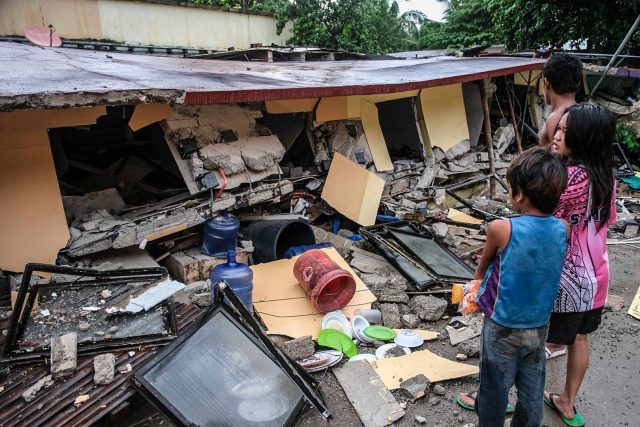MANILA, Philippines — A powerful 6.9-magnitude earthquake slammed into the central Philippines late Tuesday, killing at least 69 people and injuring dozens more as it toppled buildings, buckled roads and sent terrified residents fleeing into the streets amid relentless aftershocks.
The hardest-hit province of Cebu declared a state of calamity early Wednesday, with thousands huddling outdoors overnight, their homes deemed too risky to enter. Power and water supplies were severed across swaths of the region, leaving communities in darkness and amplifying the chaos.
“I was among them,” said one Cebu resident, speaking to the BBC from the streets. “The voices of crying children could be heard around me. They were traumatized.”
The quake struck barely more than a week after back-to-back typhoons battered the archipelago nation, claiming over 20 lives and leaving infrastructure fragile. Now, the seismic jolt has deepened the crisis in the Visayas islands, the Philippines’ densely populated central region.
Bogo, a small town on Cebu island and the community closest to the epicenter, bore the brunt of the devastation, accounting for most of the fatalities. Harrowing images emerging from the town showed rows of body bags lined along debris-strewn streets and hundreds of injured being treated in makeshift tent hospitals erected by emergency crews.
Officials issued stark warnings of “a lot of damage,” with cracked roadways, collapsed bridges and downed power lines hampering rescue efforts and complicating communication with isolated areas. Local authorities issued an urgent appeal for volunteers with medical expertise to bolster overwhelmed response teams.
Among the dead were seven residents of a village in Bogo built specifically to shelter survivors of Typhoon Haiyan, the ferocious 2013 storm that ravaged the central Philippines and killed more than 6,000 people exactly 12 years ago this November. The quake’s cruel irony underscored the archipelago’s vulnerability to nature’s fury.
In the nearby municipality of San Remigio, the ground heaved violently just as a community basketball game was underway, an emergency response official told the BBC. Nearly 20 players and spectators were rushed to hospitals; at least one later succumbed to injuries.
National police and fire bureau officials vowed to prioritize search-and-rescue operations, racing to restore electricity and distribute relief supplies of food, water and medical aid to the hardest-hit zones. “Every minute counts,” said one coordinator, as teams navigated treacherous terrain under floodlights.
The ordeal wasn’t over by Wednesday evening, when a 4.7-magnitude aftershock rattled Bogo, with tremors rippling through Cebu City and neighboring Leyte island. No additional casualties were reported, but the jolt reignited fears and kept nerves on edge.
Cebu’s archbishop, in a poignant directive, urged the faithful to steer clear of historic churches until structural inspections could be completed — a call carrying deep resonance in a province that was among the first Philippine islands colonized by Spain in the 1500s, dotted with centuries-old stone basilicas.
Earlier video footage captured the harrowing sight of a Catholic church tower in one locality swaying perilously before partially crumbling, dust clouds billowing as onlookers scattered.
As dawn broke Thursday over the shattered landscapes, aid organizations mobilized international support, but forecasters cautioned that the Philippines’ position on the Pacific “Ring of Fire” means more tremors could follow. For now, in Bogo and beyond, the focus remains on survival — and on piecing together lives upended yet again by the unforgiving sea and soil.














